Subscribe to join thousands of other ecommerce experts

At smec, we not only specialise in online marketing campaigns. Instead, we take a holistic approach to improving our clients’ ecommerce efforts. In this endeavour, we employ price intelligence reports to compare our clients’ product prices to prices of their competitors.
Price intelligence reports, however, are not only a valuable tool to optimise product price strategies in an increasingly tough ecommerce environment. They also help retailers to identify scammers who create fake web shops to capitalise on their traffic, while harming their performance and brand image.
Today, I will thus explore:
- What is healthy competition in ecommerce and how important is it?
- How to spot scammers by utilising price intelligence reports
- Advantages of price intelligence reports
- What can be done to avoid falling prey to scam pricing?
Table of Contents
What is healthy competition in ecommerce and how important is it?
Healthy competition is a surefire driver for growth in any industry. Most of our retail clients also have a strong idea in mind about where they’d like to position themselves in the market landscape. This ranges from best price guarantees to high quality brands deliberately going for a premium price strategy.
On average though, the distribution of prices per product compared to the average competitor looks something like this for most of our clients:
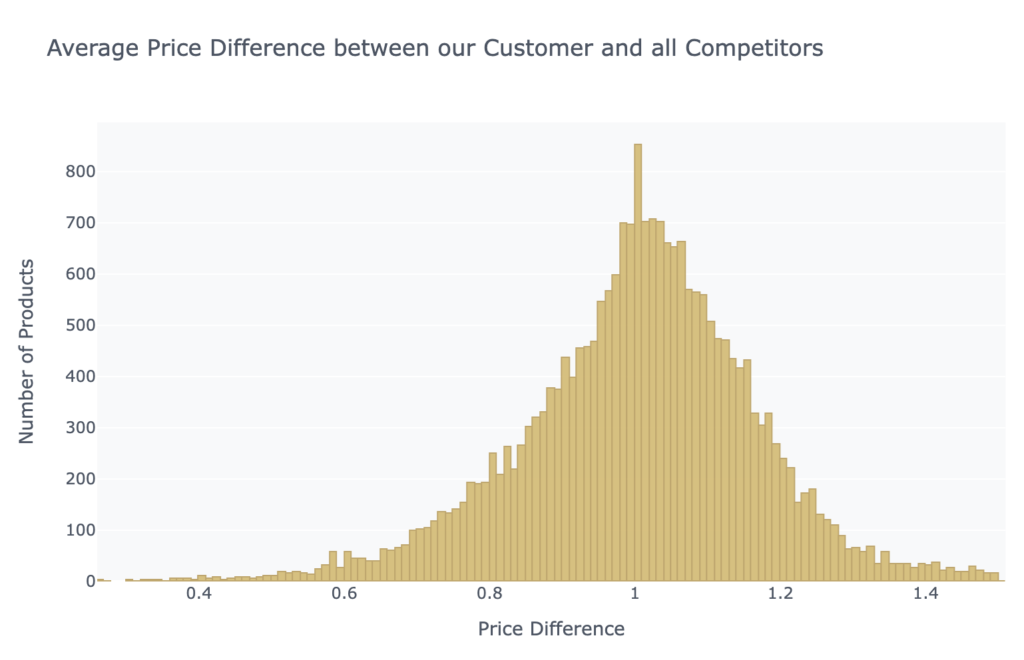
What does that tell you? Most of your products are priced about the same as the average competitor, and roughly the same amount of products are a bit cheaper – or a bit more expensive. Sure, there are some outliers where you’re up to 60% cheaper or more expensive, but these outliers are low in quantity and could be caused by promotions or other irregular effects.
How to spot scammers by utilising price intelligence reports
When analysing the distribution of prices per product for one of our clients in the pharmaceutical industry, the distribution looked strangely skewed:
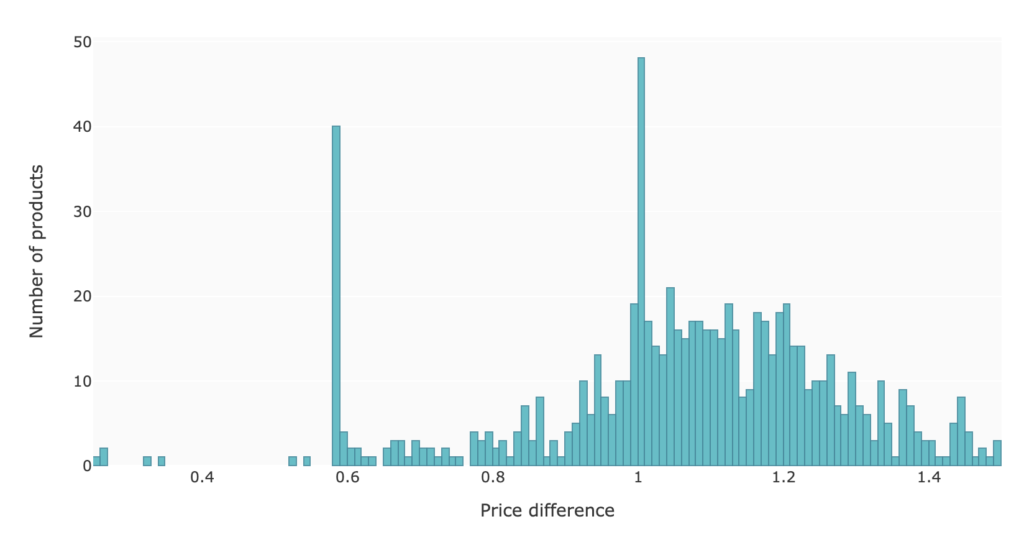
Mind the bar at 0.60 (e.g., “40% more expensive than the competition”) which contains almost 40 products. So, what’s going on there?
We noticed one competitor who has a large overlap with our clients assortment and is almost exactly 40% cheaper:
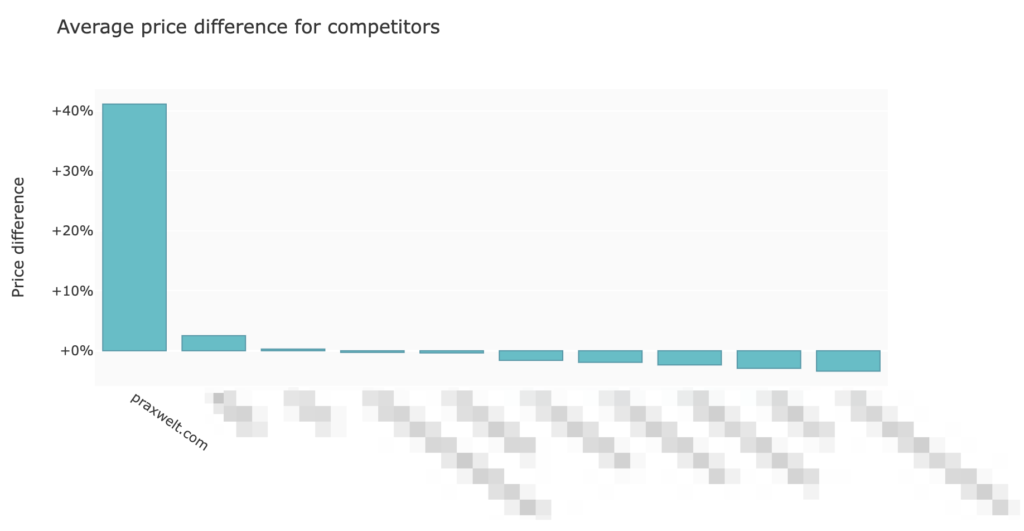
Competitor data for praxwelt.com shows a significant overlap of shared products (11.6% or 118 products) with an even greater price difference. Competitor medplus, by comparison, only appears on the list with an assortment overlap of 8.4% and 2.5% cheaper prices.
So, who are these folks? Turns out, praxwelt.com is a scam shop, trying to rip off unassuming customers according to Watchlist Internet and others:
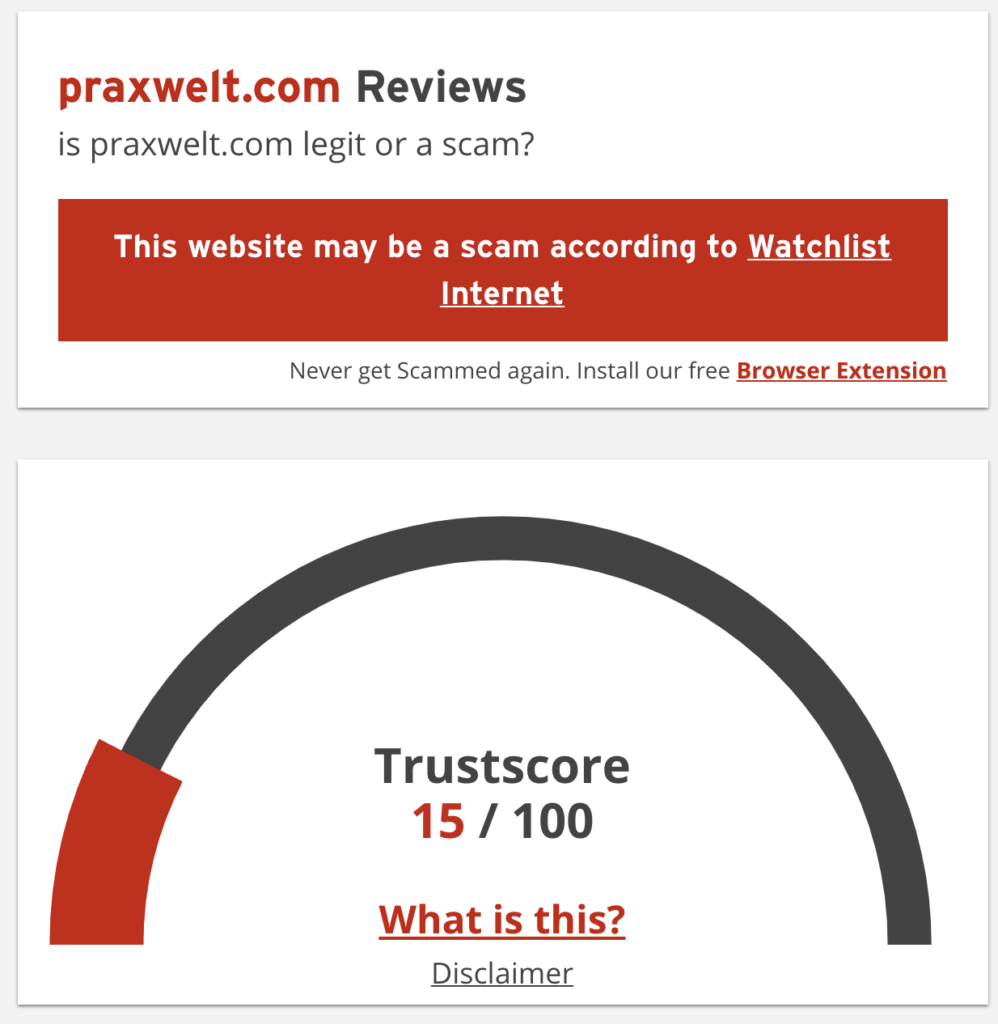
When we discussed the competition insights with our client, they pointed out that they are aware of praxwelt.com, as well as other scam shops that popped up in their vertical recently. Covid-19 and resulting buying frenzy for face masks, gloves, disinfectant etc. seems to have made this industry particularly attractive for scammers.
Advantages of price intelligence reports
Of course, detecting scammers is not the only reason why retailers may want to set up automated competitor price monitoring. Here are some other important use cases we see with our clients:
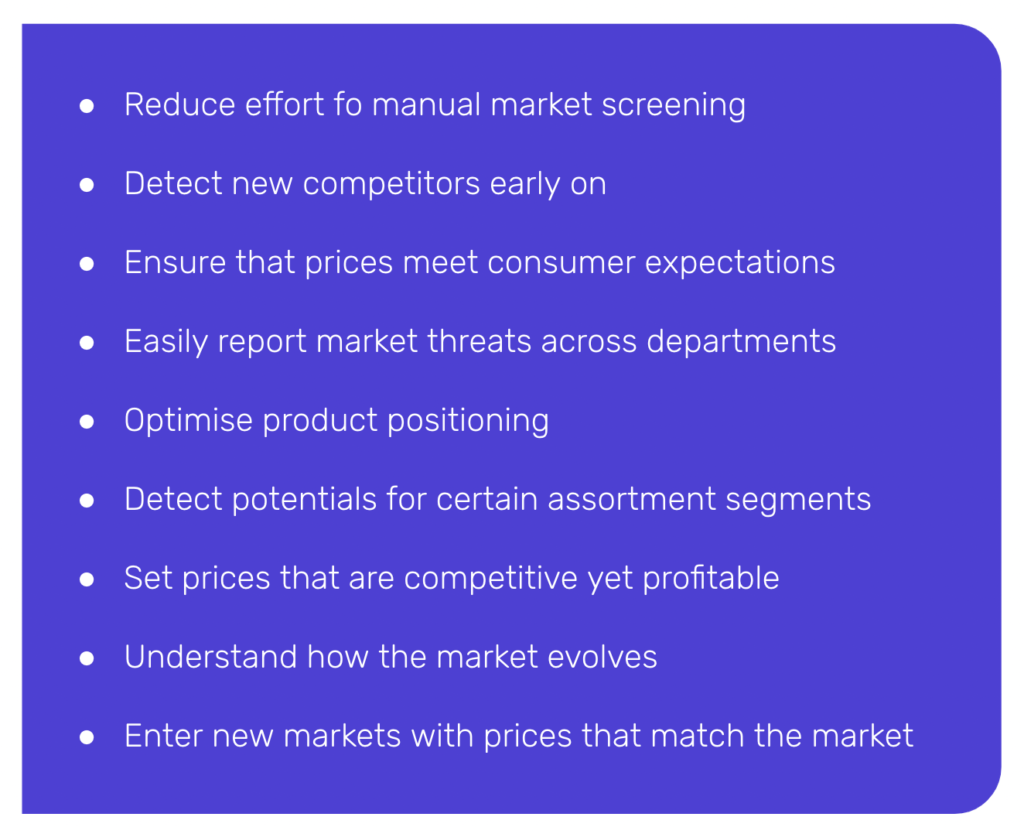
But back to our case:
What can be done to avoid falling prey to scam pricing?
Our client pursues every legal path that’s available to take the page down. But unfortunately new shops pop up faster than the authorities are able to act. Continuously monitoring the market for scam shops, however, often resembles a tedious game of whack-a-mole for our clients.
Using the Competition Insights capability in our Dynamic Price Automation technology though, at least parts of that can be automated. Whenever a new competitor with a large product overlap and price difference pops up you can be notified via email. In the future, we plan to add external signals: shop ratings, customer reviews, input from consumer protection agencies and watchlists. So, spotting bad actors will become easier for those who do play by the rules. Contact us to learn more.

